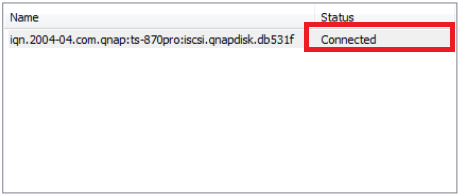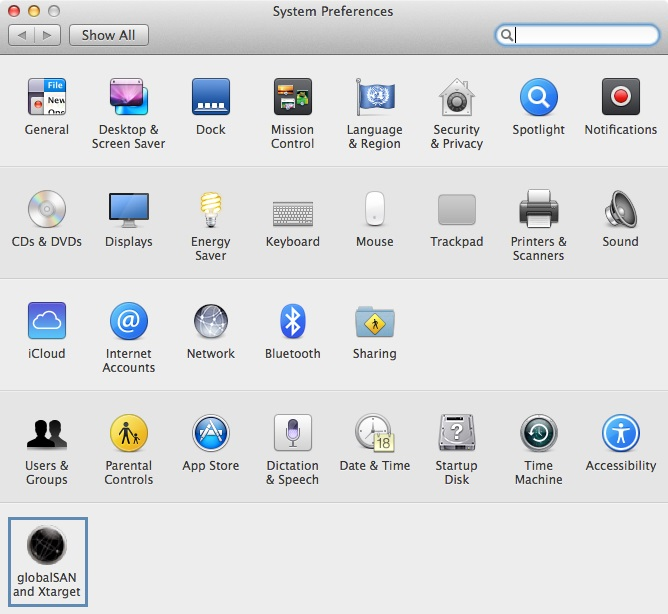
- GLOBALSAN ISCSI PORTAL WAS NOT FOUND AT THE ADDRESS MAC
- GLOBALSAN ISCSI PORTAL WAS NOT FOUND AT THE ADDRESS WINDOWS
iSCSI Overview iSCSI is a block-level protocol that enables the ability to implement a Storage Area Network (SAN) within an Ethernet/IP infrastructure. globalSAN at least disconnects less frequently, but I still would recommend using a supported platform to avoid the possibility of filesystem corruption.
GLOBALSAN ISCSI PORTAL WAS NOT FOUND AT THE ADDRESS MAC
That said, maintaining current backups is always recommended, and more so in the event this protective policy is not enforced. The globalSAN iSCSI Initiator for macOS/OS X enables Mac computers to connect to practically any iSCSI storage target, using standard GbE or 10GbE hardware. I've tried both ATTO and globalSAN, and they're both far too unstable for a production environment. 4.Executed /etc/init.d/open-iscsi restart. 2.Executed apt-get remove -purge iscsitarget 3.Rebooted the cc host. Though unlikely, it's also possible for an error to go unnoticed even with these cyclic redundancy checks in place.Ī direct connection from the workstation to the server with no additional devices (such as switches or routers) will further reduce the chance of encountering any failed transmissions. Trace nova Command: sudo nova-rootwrap iscsiadm -m node -T : volume-0000003 -p: 3260 -rescan Fix worked for above thing: 1.Changed the two flags in nova conf to true. While it’s possible the error detection would result in slower throughput because it’s actually detecting and correcting errors, in most cases the throughput is slower simply because of the CRC algorithms themselves. The Error Detection policy does require some extra processing, and while this impact is often not noticeable using gigabit Ethernet, its effect can be especially apparent when using a higher bandwidth connection such as 10GbE.ĭisabling the setting for 10GbE or higher connections will likely greatly improve throughput. It is recommended to set the values of HeaderDigest and DataDigest iSCSI parameters on the target to 'CRC32C'. This may potentially lead to data corruption. 'Header and Data' Error Detection setting was not applied on the target. which was apparently due to the fact that the NAS controlls this itself as mentioned by another comment. If there's a policy mismatch between the initiator and the target, globalSAN will show a warning when connecting. The button ' Always assign this network device the same IPv4 address ' is just not visible where it is for other devices and the IP field is greyed out so I cannot change it. Not tested yet globalSAN The iSCSI Initiator. The CRC32C (error detection) values for the HeaderDigest and DataDigest need to be in agreement on both the initiator and the target in order to be effective. This policy checks each transmitted SCSI command to ensure it's received correctly, and requests that it be sent again if a discrepancy is found. used by a service and should not be available for use as a login account. Although, it appears something isn't right.By default, the globalSAN initiator will show the enabled policy "Header and Data (recommended)" for any connected targets. iSCSI: 3945L uses istgt to export virtual disk drives that are accessible by.

I have followed the instructions and made sure to check all the spacing and syntax. I'm not exactly sure what I'm doing wrong.

Iscsiadm -mode node -targetname the_target_iqn -portal 192.168.1.200 -login My next steps are to enter the following


Iscsiadm -mode discovery -type sendtargets -portal 192.168.1.200 Open a terminal window and enter the following command My instructions from the Red Hat machine are as follows
GLOBALSAN ISCSI PORTAL WAS NOT FOUND AT THE ADDRESS WINDOWS
I have created the target on the Windows Server box and the two devices can communicate with each other. If prompted, save your changes and reboot your Mac. From the menu click on File, then Quit LaunchControl. Now click on the ‘‘ button located at the bottom right of the pane to remove it from the list. I'm using Windows Server 2012 and Red Hat Enterprise Linux v7.1 After the application is done parsing, find the item in the left pane and click on it once to highlight it. Hi there, I'm currently working on an exercise to connect to a Windows iscsi target via a Red Hat initiator machine.


 0 kommentar(er)
0 kommentar(er)
